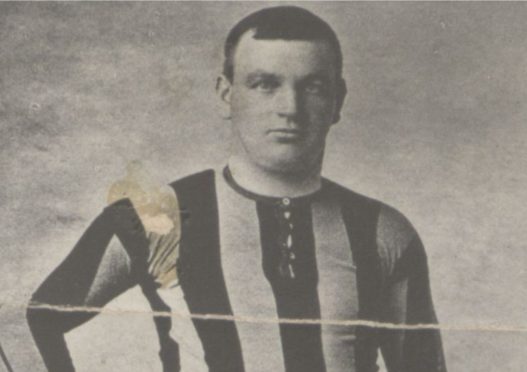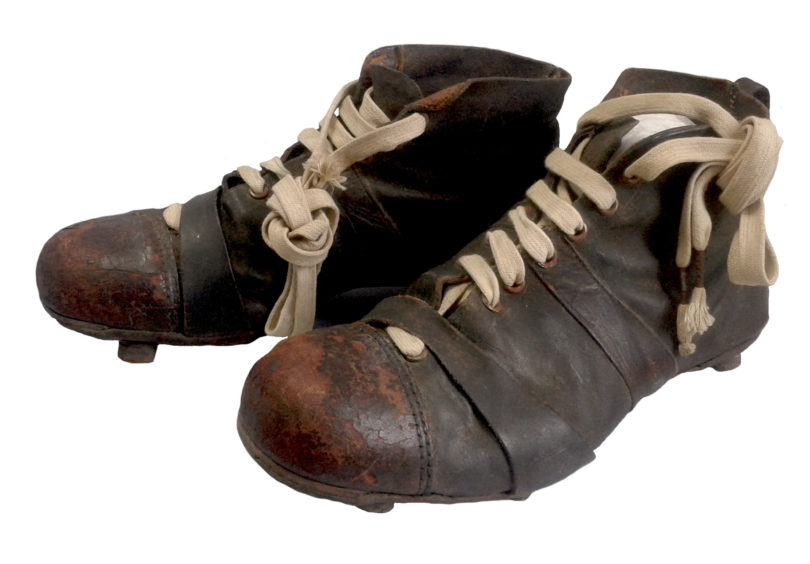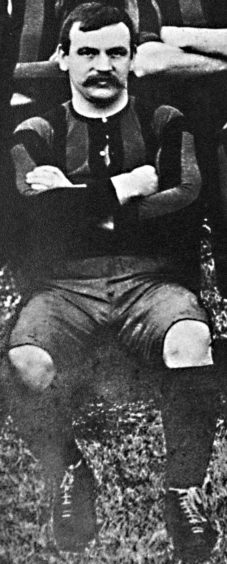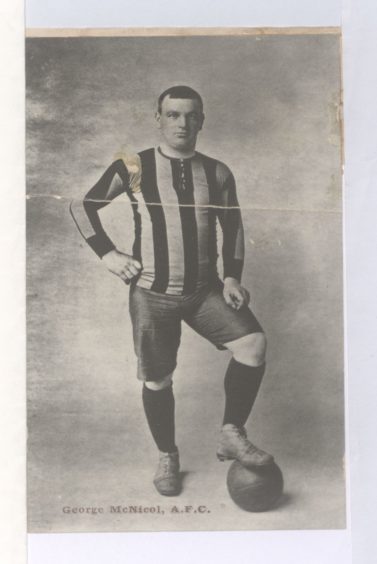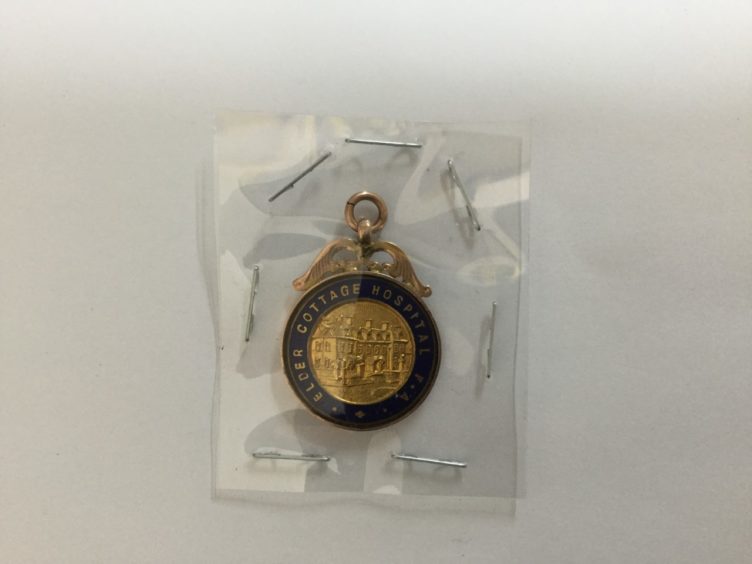He is part of the long history of Aberdeen FC and his career dates back to the formation of the club at the start of the 20th century.
And now, for the first time, the SPFL organisation’s heritage trust has released pictures of former star, George McNicol, who was among the original players who made a name for himself after the Dons came into existence in 1903.
At that stage, the creation of Pittodrie was still more than 20 years away, and the north-east team was still very much in its formative stages, but they were beginning to produce performers with genuine mystique, pizzazz and pedigree.
Yet it is one of the most quirky aspects of McNicol’s days in the Granite City that a pair of boots which were used by the prolific striker back in 1904-05 were rescued from oblivion after being discovered in a skip at Pittodrie almost 90 years later.
The precious items, which were salvaged from the scrap heap in 1993, subsequently lay unidentified in a shed for twenty years.
However, as soon as they were shown to the trust, the significance of the artefacts was recognised and there was a “eureka moment” when the name of George McNicol was spotted, scratched into the leather inside the uppers.
It is believed these may be the boots that McNicol wore when playing for the Black and Gold against Renton at Dens Park in the Qualifying Cup Final of November 1904.
McNicol was the scorer of the two goals that brought the first national piece of silverware back to what would later become the Pittodrie trophy cabinet, much to the delight of their followers and the whole city of Aberdeen.
The man, who has previously played for Rangers, Falkirk and Partick Thistle, was at Pittodrie for two seasons, making a total of 27 appearances and scoring a healthy 14 goals during that time before leaving the club.
Despite being only five foot five inches tall, he was renowned for his combative, take-no-prisoners approach and regularly latched on to rivals’ defensive frailties.
After leaving the Granite City, he continued his career at Raith Rovers from 1906 to 1913, but, of course, left a brace of mementos to remember him by in Aberdeen.
His boots were in very poor condition just a few years ago, as one might have anticipated, given how close they came to being destroyed.
But the heritage trust representatives immediately took them to conservation experts at Hopetoun House, near Edinburgh, and paid £300 to have them carefully cleaned and meticulously conserved, so that they can be seen and enjoyed by Dons supporters not just now, but far into the future.
A display cabinet was made for the boots and they have been put on show in the Black and Gold Lounge at Pittodrie, where they will remain until the eventual move to the new Kingsford stadium at some stage in the years ahead.
They are accompanied by other pieces of memorabilia, which have gradually been curated by the enthusiastic members of the trust, who have also discovered such items as a stained glass panel, players’ medals, a ledger used by the former club committee and myriad other pieces of sporting lore.
Aberdeen FC in 1904. Black and gold striped shirt with blue shorts. Black socks with gold trim. (Pic: AFC) pic.twitter.com/Xed7FOILm5
— PictureThis Scotland (@74frankfurt) April 16, 2020
Chris Gavin, secretary of the trust, confirmed that his organisation is working hard to track down other prize pieces of memorabilia and rare programmes, pictures and portraits from these pioneering days more than 100 years ago.
He said: “We have never previously published the 1905 photograph of McNicol, but it is special to us, because he was an important player in those early days.
“The picture was taken by Edward MacIntosh Middleton of St Swithin Street in Aberdeen and we are still hunting for any other AFC-related pictures that he may have taken.”
The organisation is constantly engaged on all kinds of research as well as looking out for fresh items which they can add to what they have labelled The Aberdeen Collection.
Mr Gavin added: “As well as continuing to add information about every game played by an Aberdeen FC team, we are looking to round out the stories of all the many individual players who have represented the club.
“It is well known that a lot of information and artefacts were lost in the Main Stand fire of 1971 so there are a lot of gaps in the knowledge of many aspects of the club.
“The Trust members can get just as excited to find a piece of information as when a rare artefact turns up – for instance, pinning down the first reference to Aberdeen as ‘the Dons’ was a really thrilling moment.
“That turned up in an edition of the Scottish Referee publication in October 1905 and it gave us all a lot of pleasure because it is one of the things we take for granted nowadays, but until we found this, there was no word on when the term was first coined.
“We were also delighted to get hold of some career medals of Frank Dunlop – including his 1947 Cup winners’ medal and a memento of the Empire Exhibition in May 1938 when the Dons were involved in a tournament against Chelsea and Everton which took place in Glasgow.
“A great find within the walls of Pittodrie was the original Share Register dating from 1903. How on earth this survived the fire and the rebuilding of the Beach End is beyond us, but it is one of the earliest documents that we have in our possession.”
He and his colleagues are always searching for more snippets of history and have developed a close affinity with member organisations, who have ensured – even in lockdown – that Aberdeen FC has maintained a close relationship with their supporters.
'The' Door – Aberdeen FC Scottish Qualifying Cup win in 1904. First trophy won by the club. My shed needs a new door… pic.twitter.com/GhSE4RKs
— 𝔇𝔬𝔩𝔩𝔶 𝔇𝔦𝔤𝔦𝔱𝔞𝔩 (@dollydigital) December 7, 2012
Older readers might remember the comic strip “Billy’s Boots”.
But, in Pittodrie lore, these artefacts from the early 1900s are every bit as cherished.
Further information can be found at http://www.afcheritage.org/main.cfm
All the pictures in this article are courtesy of the Aberdeen FC Heritage Trust.
